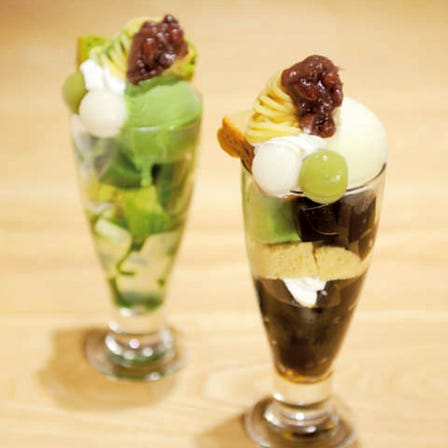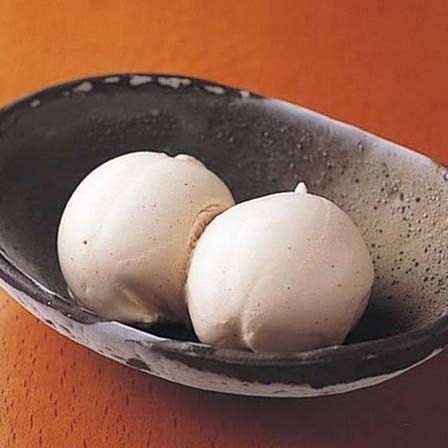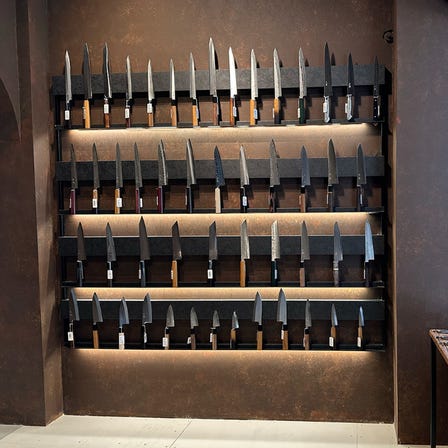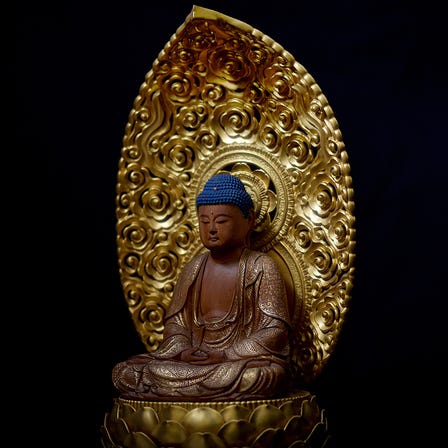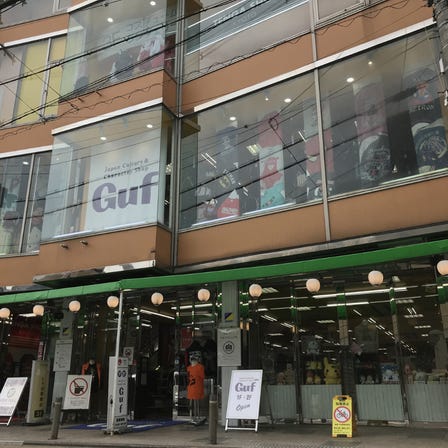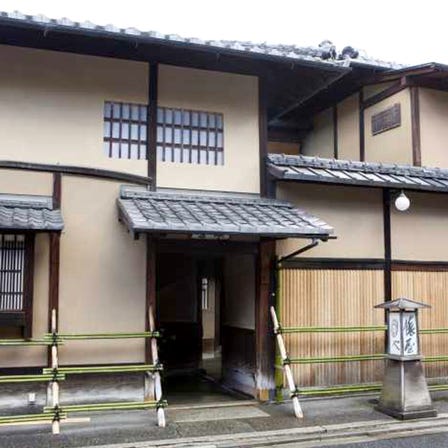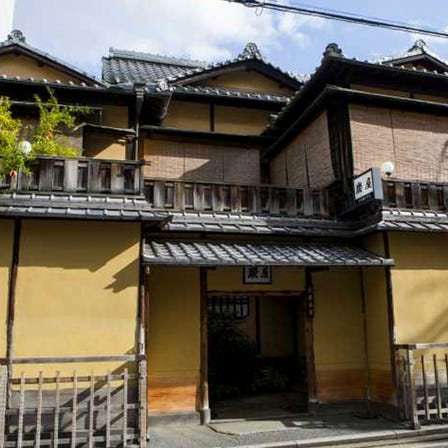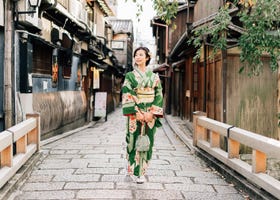Description
Heian-jingu Shrine was built in 1895 thanks to the yearning of Kyoto's citizens to restore a city devastated during the upheaval at the end of the Edo period. The shrine enshrined the 50th Emperor Tenmu, who relocated the capital to the Heian-kyo (ancient Kyoto). Commemorating 2,600 years of imperial succession in 1940, it also enshrined the 121st Emperor Komei, who was the last emperor to occupy the throne in Kyoto. The main building of Heian-jingu Shrine is a 5/8 scale reproduction of Chodo-in, a state chamber of Daidairi (place of the Imperial Palace and government offices) in Heian-kyo. In addition to the shrine, buildings such as Daigokuden, Outen-mon gate, Soryuro, Byakkoro, Tozai Horo, and Ryubidan, Shin-en Garden, which has been nationally designated as a place of scenic beauty, were built at the same time the shrine was founded. Heian-jingu Shrine and Shin-en Garden have received a star in the ”Michelin Green Guide Japon.”
Large vermillion torii gate towering over Jingu-michi
The grand torii gate in Jingu-michi, 300 meters south of the Outen-mon gate (the front gate of Heian-jingu Shrine), was built in 1929 to commemorate the enthronement of Emperor Showa. Being a registered national tangible cultural property and measuring 24.4 m high and 18 m wide, this torii gate is one of the largest in Japan. Its poles have a diameter of 3.63 meters.
Shin-en Garden, a place of scenic beauty with an atmosphere accented by water and seasonal flowers
Shin-en Garden is a Japanese garden constructed at the same time as Heian-jingu Shrine's founding, and has been designated as a national place of scenic beauty. Comprising the east, central, west, and south gardens that surround the main shrine building, the garden adopts the Chisen Kaiyu style (Japanese garden with a path around a central pond and fountain) and draws water from the Lake Biwa Canal. The garden covers a total area of approximately 33,000 square meters. A visit in any of the four seasons showcases its beauty: weeping cherry trees in spring, alluring irises in summer, fiery leaves in autumn, and snow scenery in winter.
Period Festival, a spectacular live picture scroll reflecting eight eras
The Period Festival, one of the three major festivals in Kyoto, is an annual event at Heian-jingu Shrine held on October 22. It is a parade divided into twenty sections representing eight eras: the Meiji Restoration, Edo, Azuchi-Momoyama, Muromachi, Yoshino, Kamakura, Fujiwara, and Enryaku. Approximately 2,000 people dressed in costumes from the eight eras form the parade that stretches about two kilometers.
Location Information
-
- Address
-
97, Okazakinishitennoucho, Sakyo-ku, Kyoto-shi, Kyoto, 606-8341
-
- Nearest Station
-
Higashiyama Station
・ Tozai Line
10 minutes on foot
-
- Phone Number
-
075-761-0221Available languagesonly in Japanese
-
- Hours
-
6:00am - 6:00pm
*Differ with season
-
- Closed
- None
-
- Public Site
- Official Site
Recommended Spots in Area
- Visiting
- Eating
- Shopping
- Lodgings
-
 Pontocho & Kiyamachi StreetGion, Kawaramachi, Kiyomizu-dera TempleHistorical Places
Pontocho & Kiyamachi StreetGion, Kawaramachi, Kiyomizu-dera TempleHistorical Places -
 Ninen-zakaGion, Kawaramachi, Kiyomizu-dera TempleHistorical Places
Ninen-zakaGion, Kawaramachi, Kiyomizu-dera TempleHistorical Places -
 Puppy Café Rio KyotoGion, Kawaramachi, Kiyomizu-dera TempleCulture Experience
Puppy Café Rio KyotoGion, Kawaramachi, Kiyomizu-dera TempleCulture Experience -
 Maruyama ParkGion, Kawaramachi, Kiyomizu-dera TempleParks
Maruyama ParkGion, Kawaramachi, Kiyomizu-dera TempleParks -
 Nishiki Market Shopping DistrictGion, Kawaramachi, Kiyomizu-dera TempleOther Sightseeing
Nishiki Market Shopping DistrictGion, Kawaramachi, Kiyomizu-dera TempleOther Sightseeing -
 Shimogamo-jinja ShrineGinkakuji Temple, Nanzenji TempleShrines
Shimogamo-jinja ShrineGinkakuji Temple, Nanzenji TempleShrines
-
KikusuiGion, Kawaramachi, Kiyomizu-dera TempleFrench Food
-
Fuka Nishiki ShopGion, Kawaramachi, Kiyomizu-dera TempleOther Cafes and Sweets
-
Sohonke Yudofu Okutan Nanzen-ji TempleGion, Kawaramachi, Kiyomizu-dera TempleTofu
-
Kaden Kyoame Gion KoishiGion, Kawaramachi, Kiyomizu-dera TempleOther Cafes and Sweets
-
Café SoireeGion, Kawaramachi, Kiyomizu-dera TempleOther Cafes and Sweets
-
Gion Kinana HontenGion, Kawaramachi, Kiyomizu-dera TempleOther Cafes and Sweets
-
MUSASHI JAPAN Kyoto Kawaramachi Knife ShopGion, Kawaramachi, Kiyomizu-dera TempleHousehold Goods Stores
-
Yoshida Gennojo-Roho Kyoto Buddhist AltarsNijo Castle, Kyoto Imperial PalaceGift Shops
-
BUYSELL Kyoto Shijo-dori storeGion, Kawaramachi, Kiyomizu-dera TempleClothing Stores
-
Japan Culture & Character Shop Guf Kyoto storeGion, Kawaramachi, Kiyomizu-dera TempleGift Shops
-
MUSASHI JAPAN Kyoto Kiyomizu Knife ShopGion, Kawaramachi, Kiyomizu-dera TempleHousehold Goods Stores
-
Seiko Boutique KyotoGion, Kawaramachi, Kiyomizu-dera TempleJewelry Stores and Watch Shops
-
Six Senses KyotoKyoto Station, To-ji TempleHotels
-
Tawaraya RyokanNijo Castle, Kyoto Imperial PalaceRyokan
-
Rinn Hostel MiyagawachoGion, Kawaramachi, Kiyomizu-dera TempleEconomy Hotels
-
Kaya Kyoto Nijo Castle BW Signature CollectionNijo Castle, Kyoto Imperial PalaceHotels
-
Sumiya RyokanNijo Castle, Kyoto Imperial PalaceRyokan
-
Yugen Kyoto ShijoKyoto Station, To-ji TempleHotels




















